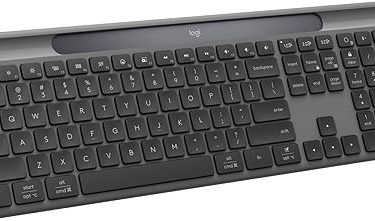Qualcomm has been informed by Arm Ltd. that its architectural license, which permits Qualcomm to produce the Oryon CPU cores at the core of the Snapdragon X Elite chip and Copilot+ PCs, will expire in 60 days.
An earlier Bloomberg report that Arm is terminating the architectural license agreement has been independently verified. Qualcomm referred to the cancellation notice as “further unsubstantiated threats” and stated that it anticipates a trial in December to settle the matter.
According to a person with knowledge of the matter, the Arm-Qualcomm deal covers both the second-generation Oryon core that Qualcomm unveiled this week at its Snapdragon Summit in Maui and the current Oryon core found inside the Snapdragon X Elite, the source said on Wednesday.
In particular, Arm is terminating an Arm v8 architectural license agreement. According to the source, Qualcomm has an existing license to Arm v9 fixed cores, which should cover Arm’s Cortex cores and Arm CSS for the Client, but the company has never signed an Arm v9 architectural license.
An explanation of the license agreement
Arm uses a variety of methods to license its intellectual property to businesses, including Qualcomm, Samsung, Apple, and MediaTek. In the past, Qualcomm and other businesses have inked agreements to use Arm cores, such as the Cortex, in their designs.
The licensee would have to maintain the Cortex CPU in this scenario to comply with the basic core licensing. The two CPU cores would be in direct competition with one another if a competitor signed a comparable contract. Finished products based on these core licenses may wind up being somewhat comparable, even though the licensees often had considerable flexibility—for instance, the Cortex clock speeds might be changed.
However, licensees with an Arm architectural license have a great deal more freedom. For instance, Apple has been able to develop a unique processor, such as the M3, while yet keeping the Arm instruction set architecturally compatible thanks to that licensing. Chip designers can use an architectural license to express their creativity and possibly go beyond what Arm engineers could create with their fixed Cortex cores.
For what reason did Arm sue Qualcomm?
A few years ago, the two issues reached a climax when Qualcomm’s PC chips from the Snapdragon 8 series were unable to compete with AMD and Intel’s x86 CPUs. Since Nuvia had an architectural license that it was using to produce Arm chips for servers, Qualcomm acquired Nuvia in 2021 to strengthen its own Arm-based CPU designs.
Arm contends that the license’s language gave it authority over whether it could be transferred, despite Qualcomm’s belief that it purchased the rights to the license and Nuvia’s intellectual property.
Arm filed a lawsuit against Qualcomm in the fall of 2022, requesting an injunction to force the company to destroy Nuvia’s chip designs. Bloomberg claims that in 2023, Arm revoked Nuvia’s licenses. Even though the two parties agreed on a court date in December and Qualcomm continued to produce products based on Nuvia’s ideas, the lawsuit has since quietly simmered without any significant action from either side.





